| Peter Jackson is not one
to shy away from a challenge. As a pioneer of studies in gay, lesbian
and transgender cultures in Asia, Associate Professor Jackson admits
that at times his path in that field has not been easy, both with
some fellow academics and research-funding bodies.
Now he has taken on a new challenge—as editor
of the Asian Studies Association of Australian (ASAA) journal, Asian
Studies Review (ASR). Appointed to the role last January, Jackson,
who is also Convenor of the Division of Pacific and Asian History
at the Australian National University, is working with outgoing editor
Maila Stivens on the transition, before assuming full responsibility
for the journal at the beginning of next year.
‘Maila has done truly excellent work, particularly
in working with our publisher Taylor and Francis in bringing the journal
online and creating an internet-based submission and editing process,”
he said. ‘Under her tenure, the number of downloads from libraries
has virtually doubled. The journal is being more widely cited, and
we’re getting many more submissions than we used to, particularly
internationally.’
From its beginnings as an ASAA newsletter several
decades ago, ASR has moved from having a strong Australian focus to
become a genuinely international journal, particularly under Maila
Stivens and her predecessor Kam Louie. Jackson intends to continue
with the internationalisation of the journal.
‘There are a lot of Asian Studies journals
out there now, and we’re in the process of defining our niche
in that academic market,’ he said. ‘ASR has evolved to
look at issues of modern Asian history, culture and society. And although
we don’t do economic-measurement articles, we’re also
interested in the economies of Asia as they interact with society,
culture and history.
‘Historically, we’ve had regional editors,
from Japan, China, Southeast Asia, South Asia, and now Korea, whose
job has been to edit and oversight the peer review process for articles
on their region. This will continue, but with the growth in globalisation,
transnational and media studies, particularly among younger scholars,
an increasing number of papers don’t fit into any one particular
country, or even a region. Consequently, I’ve introduced two
thematic areas—Transnational Asia, or what used to be called
General Asia, and Diasporic Asia.’ |

With more and more books on Asia being published,
Jackson also has plans for the ASR’s book review section. ‘The
regional and thematic editors don’t have time to look after
editing as well as book reviews, so we’ve established new positions
of review editors for each region and theme,’ he said. ‘Another
planned innovation is to introduce review essays, where we commission
a reviewer to engage four or five books on a theme and base an essay
around them of 3000–4000 words. This will be in addition to
our usual book reviews.’
ASR readers can also expect to see more ‘guest’
issues. ‘With fewer publishing houses being interested in the
traditional edited collection—produced from conferences, workshops,
etc.—journals are becoming an increasing site for what used
to be guest-edited collections,’ Jackson said.
‘Over the past couple of years the ASR has
been receiving a growing number of applications and interest in special
issues. Our publishers have found that ‘special issues’
often get double the interest of a general issue, so we’re in
the process of defining our guidelines for people who may be interested
in submitting proposals for special issues.
Jackson is optimistic about the continuing health
of Asian Studies in Australia, and the future of academic journals
such as the ASR. And as editor-in-chief, he says he will be interested
in suggestions and feedback from readers on how they regard the journal.
|
‘The
traditional areas for Asian studies, the departments in universities,
are declining everywhere,’ he said, ‘but the study of
Asia in the disciplines definitely remains strong. The number of papers,
particularly by younger scholars, at last years ASAA biennial conference,
for example, shows the breadth of what is still happening.
‘But what is happening is not occurring so
much in the traditional departments of Asian Studies. People who are
moving into Asian Studies may not have had anything to do with Asia
until their PhD, or even after. So my interest in bringing on broad
thematic editors is, in a sense, to reach that market.
Jackson says he finds it difficult to foresee the
future for print journals such as ASR. ‘A lot of libraries now
subscribe only to the online version of journals, and this is something
the ASAA is considering—the considerations in maintaining the
print version versus the online rights version. I’ve been quite
happy with the online version of ASR because our publisher has digitised
every issue. Nevertheless, I think there will continue to be a place
for the print version, but maybe less so as time goes by.’
Jackson came to Asian Studies via Western philosophy,
developing his interest, initially, in Asian religions and languages
while backpacking in the region in the early 80s. Increasingly, his
interest has focussed on Thailand, and while he maintains an interest
in Buddhism, his research has moved more into the realm of social
history, including the history of gender and sexuality in Asia. In
2005, with colleagues from Australia and Thailand, he organised the
first International Conference in Asian Queer Studies in Bangkok.
Of the 160 participants, 80 per cent were from Asia, reflecting the
rapid growth of interest in studies in minority gender and sexuality
issues in the region.
“Work in this field has not always been particularly
easy and I’ve had quite a bit of resistance over the years,
including the loss of a federal ARC grant,’ he said.
Jackson continues to work with gay and lesbian HIV/AIDS
education NGOs in Bangkok, and recently won a large grant from the
British Library Endangered Archives Program to digitise Thai gay and
lesbian publications and put them on line to create an internally
accessible resource in this field of study. The website for this project
is Thai
Rainbow Archives Project.
|




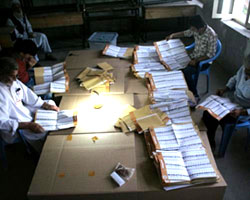
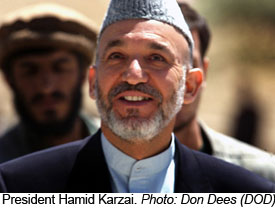
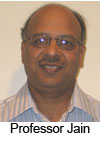
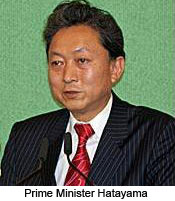 DPJ
leader Yukio Hatoyama was elected as Japan’s prime minister on
16 September. This is only the fourth time since the formation of the
LDP in 1955 that a non-LDP leader takes the political helm in Japan.
DPJ
leader Yukio Hatoyama was elected as Japan’s prime minister on
16 September. This is only the fourth time since the formation of the
LDP in 1955 that a non-LDP leader takes the political helm in Japan.


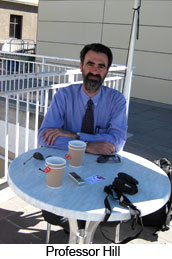

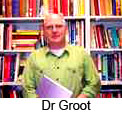

 Tell
us something of your background and how you became interested in West
Asia?
Tell
us something of your background and how you became interested in West
Asia? Tell
us about your PhD research on environmentalism in India?
Tell
us about your PhD research on environmentalism in India?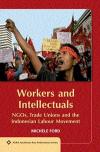 Workers
and Intellectuals: NGOs, Trade Unions and the Indonesian Labour Movement.
Workers
and Intellectuals: NGOs, Trade Unions and the Indonesian Labour Movement. How
the Years Were Named. Rainen wa Nanidoshi
How
the Years Were Named. Rainen wa Nanidoshi  Kampung
Boy
Kampung
Boy  History
of Aid to Laos. Motivations and Impacts
History
of Aid to Laos. Motivations and Impacts 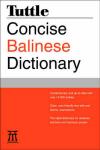 Tuttle
Concise Balinese Dictionary
Tuttle
Concise Balinese Dictionary  Wartime
Kitchen: Food And Eating In Singapore (1942-1950)
Wartime
Kitchen: Food And Eating In Singapore (1942-1950) Fiery
Dragons: Banks, Moneylenders and Microfinance in Burma
Fiery
Dragons: Banks, Moneylenders and Microfinance in Burma  Constructing
Singapore: Elitism, Ethnicity and the Nation-Building Project
Constructing
Singapore: Elitism, Ethnicity and the Nation-Building Project People
of Virtue: Reconfiguring Religion, Power and Moral Order in Cambodia
Today
People
of Virtue: Reconfiguring Religion, Power and Moral Order in Cambodia
Today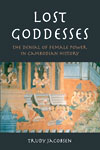 Women
had a high status in pre-modern Southeast Asia; this is constantly
stated, especially in relation to discussions on their status today
in the region. Why, then, is it that the position of women there today
is far from equitable? This is the first study to address women’s
place in Cambodian history, and revises accepted perspectives in the
history and geopolitical organisation of Cambodia since c. 230 CE.
In so doing, it examines the relationship between women and power
and analyses the extent of female political and economic participation
as revealed in historical sources, including the ways in which women
were represented in art and literature. This study will be of interest
to scholars working in history, anthropology, gender studies, politics,
religion, Cambodian/Khmer studies, and Southeast Asian studies.
Women
had a high status in pre-modern Southeast Asia; this is constantly
stated, especially in relation to discussions on their status today
in the region. Why, then, is it that the position of women there today
is far from equitable? This is the first study to address women’s
place in Cambodian history, and revises accepted perspectives in the
history and geopolitical organisation of Cambodia since c. 230 CE.
In so doing, it examines the relationship between women and power
and analyses the extent of female political and economic participation
as revealed in historical sources, including the ways in which women
were represented in art and literature. This study will be of interest
to scholars working in history, anthropology, gender studies, politics,
religion, Cambodian/Khmer studies, and Southeast Asian studies.